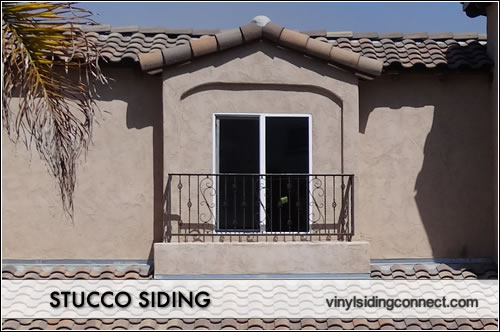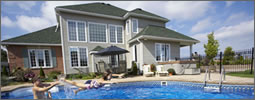Stucco siding is one of the most popular home cladding options, especially in dryer and sunnier climates such as the south west United States. It offers lots of advantages, including cost and durability, however it does have two disadvantages that you will want to explore before deciding if stucco siding is the right cladding option for your home.




Stucco Siding Basics
Stucco is made from a mixture of sand, pebbles and lime and comes in a powder form, which is then combined with water (much like concrete) to create the stucco base. Stucco siding is typically sprayed onto the house using professional equipment designed for this type of stucco installation, although it can also be applied using a hand trowel. In certain cases, the stucco can be applied simply by hand. Overwhelmingly, it is applied using this first and more professional, approach.
There are a number of different texture options with stucco; it can be applied smooth, raked, course or even swirled. In addition, pigment can be added into the stucco mix to create any number of different colors, tones or hues. Some homeowners choose to first apply the stucco and then paint the surface afterwards. The fact that stucco can be painted is a plus for certain homeowners who want to have the option of changing the overall home look and color every 10 or 15 years.
In most cases, stucco is applied over an underlayment of paper and wire mesh or over simple wooden slats. Stucco is quite versatile and can be laid over many existing materials and should adhere rather well, assuming the surfaces are prepped correctly.

Stucco Siding Cost
Stucco is one of the more affordable cladding options on the market. In general, homeowners can expect to pay between $6 and $9 per square foot for stucco siding.
This price rainge includes all of the materials and the labor cost for installation. Compare this to the cost of fiber cement siding.

Stucco Siding Advantages
One of the main advantages of stucco is its fire retardant qualities. As well, stucco is quite energy efficient and should add some insulating properties to a home. Finally, stucco tends to be a durable siding option that is able to expand and contract as the seasons change and temperatures fluctuate. There is little to no maintenance required with stucco siding, perhaps a light hose down now and again to get rid of dirt and debris.

Disadvantages | A Flat Look
Some homeowners feel that stucco siding has a very flat and unappealing look to it. This is more the case from a distance because stucco actually has quite a bit of texture that can be seen from close-up. This issue is, admittedly, one of opinion more than anything else. Some homeowners actually like the flat look of stucco, especially if they are going to add accent colors to the shutters, doors, windows, etc.

Issues With Moisture
One of the main disadvantages of stucco siding is the potential moisture issues, if proper barriers are not in place or in areas that receive an excessive amount of rain. This will initially occur at the bottom edge of the stucco and then work its way up. This can cause the stucco to peel and require expensive repairs. This is the primary reason why quality installation is so necessary.
Most stucco used today, however, is a synthetic stucco, that does not have the same moisture issues that it once did. In addition, synthetic stucco siding provides better insulation and R-value for the home’s walls. However, even with the advent of synthetic stucco options, this cladding is probably best avoided in areas that are subject to excessive rain and moisture.

Related Topics: Stucco Siding Cost



